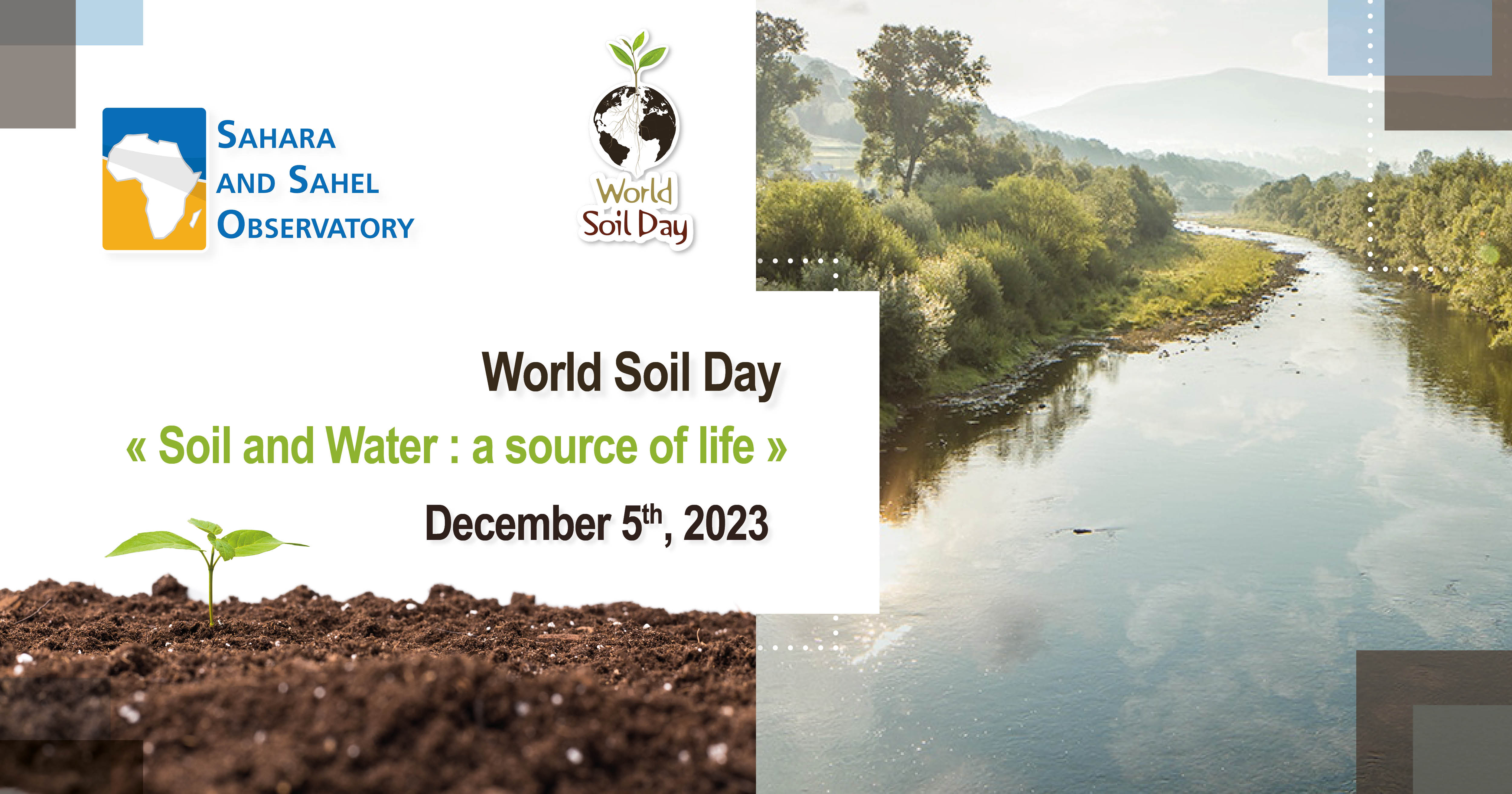World Soil Day - December 5, 2023 | "Soil and Water: a source of life"

Malak Chalbi
NRM Engineer, specialized in wildlife management,
Sahara and Sahel Observatory
World Soil, Water, or even Life Day...What difference would that be? Of course, these are not synonyms, still, they are interdependent and interconnected elements that come together. This is why the theme of the World Soil Day “Soil and Water, sources of life” could not have come at a better time.
It goes without saying that soil is the physical support of life, water is an essential element for life, and life is the set of phenomena which characterize living beings. But let's take a closer look...
There might be several questions to ask… How important are soil and water to keep life on Earth? What is the relationship between soil and water to achieve sustainable agri-food systems?
First of all, it’s not just about what the soil provides to humans.
It is important to value and protect soil for many other reasons. Soils support a considerable number of plant and animal species of different sizes. In a single gram of soil, there can be up to 50,000 species of microorganisms. Yes, underground biodiversity is much greater than the one on the surface. Healthy soil is also a very valuable carbon store that captures carbon and keeps it locked in stable forms. It regulates the atmosphere and plays the role of a natural filter which purifies and stores the infiltrating water. To make a long story short, soil is the basis of life for all living things.
Since the dawn of time, human beings have settled near soils that are more easily cultivated. Indeed, soil and water are at the origin of ecosystems but also of global food production, the quality of nutrients and their availability. 95% of our food is produced in our soils. One cubic meter of healthy soil can hold more than 250 liters of water. Soil and water are therefore the very spot in which plants develop. Most of the elements that plants need to grow properly and have nutrient-rich tissues come from the soil that allows the people to grow the food they depend on. In addition, soils and the water cycle deeply intertwine. The capacity of the soils to store water and release it is fundamental to feed plants (green water) and for the recharge of groundwater and watercourses (blue water).
The fact is plain to see: soil and water provide ecosystems and societies with a huge deal of services and crucial raw materials for all our activities.
Unfortunately, not only these resources are limited but they are coming to depletion.
By 2030, the most vulnerable people will suffer from an overall decline in food production due to more frequent crop failures and the emergence of almost a billion hectares of degraded land.
Today, Africa is facing land degradation, one of the most serious threats caused by agriculture, overgrazing, deforestation, mining, industrialization, infrastructure, urbanization and pollution, in addition to natural factors.
African populations heavily depend on natural resources and have agriculture as their primary means of livelihood. Due to poverty and difficult socio-economic conditions, this aspect has become increasingly perceptible. By domino effect, the soils and natural resources are heavily and unsustainably exploited without taking into account the capacity for resilience that is increasingly marked. Indeed, it is said that 65% of productive land on the African continent is degraded. Degradation affects more than 30% of arable land in the Sahel region due to the expansion and intensification of agriculture in order to feed the growing populations.
Integrated soil and water management might be the key to their sustainability. Additionally, implementing sustainable soil management practices will surely improve water quality and quantity for agriculture as well as soil biodiversity and fertility. Indeed, sustainable soil management is indispensable to reduce erosion and compaction which disrupt the water storing, draining and filtering capacity, but also exacerbate the risk of flooding, landslides, sand and dust storms, droughts, etc. Soil and water conservation thus increases the capacity of land to withstand extreme climate events and contributes to climate change mitigation and adaptation. In other words, the soils represent water reserves for plants and for exchanges with the atmosphere.
Characterising the water reservoir accessible to the plant called the “available water capacity” is decisive for better understanding the interactions between the crops and their environment, optimizing water management through irrigation and adapting the choice of the crops. Preserving these reserves makes it easier for crops to adapt to increased evaporation, reducing the need for irrigation and mitigating temperature increases through evapotranspiration. Moreover, the fight against urban heat islands requires the creation or conservation of green spaces, and therefore the soils.
Now what ?
Synergies between the three Rio Conventions to achieve the objectives and in particular, improve soil health need to be strengthened. Between a 21st session of the Committee for the Review of the Implementation of the United Nations Convention to Combat Desertification (CRIC21), which was held recently, and a 28th Conference of the Parties on climate change (COP28) currently underway, this World Day highlights the immediate need of united efforts.
During CRIC21, the importance of the local know-how of indigenous populations, community commitment, capitalization and sharing of knowledge as well as strengthened science-policy-society interface were often highlighted. It is in this spirit that the Sahara and Sahel Observatory is developing a documentary book on land degradation and sustainable management in Africa which will be released soon.
In addition, on the occasion of World Soil Day, the whole society is mobilizing to empower citizens and to advocate for sustainable management of soil resources. Many events aiming to draw attention to the importance of healthy soils are organized around the world. The convergence of different stakeholders towards a common objective constitutes a true element of hope.
